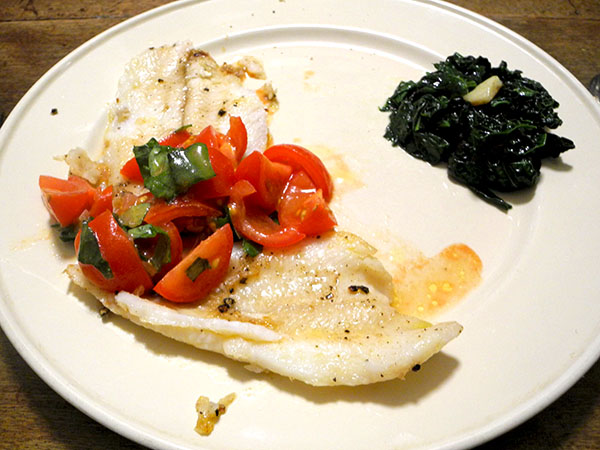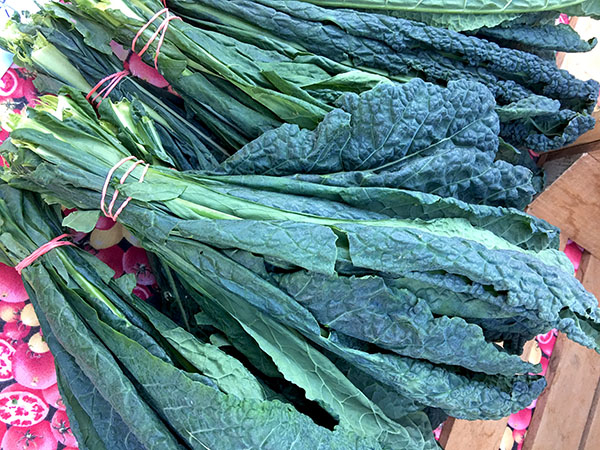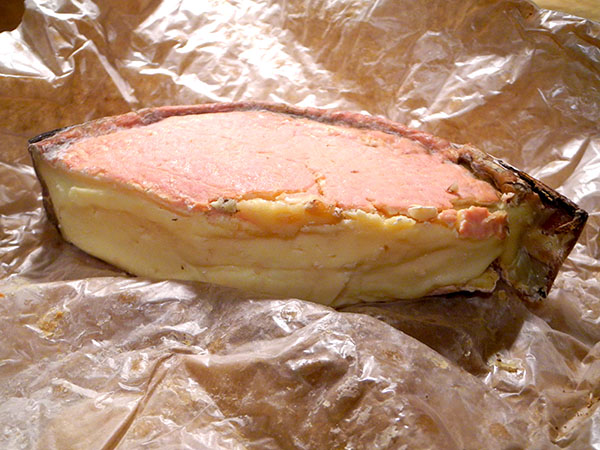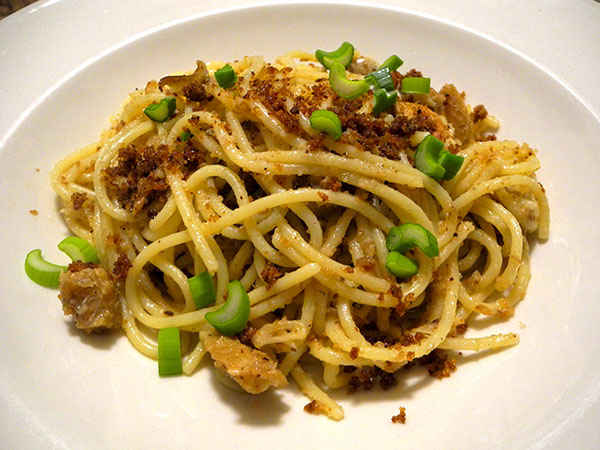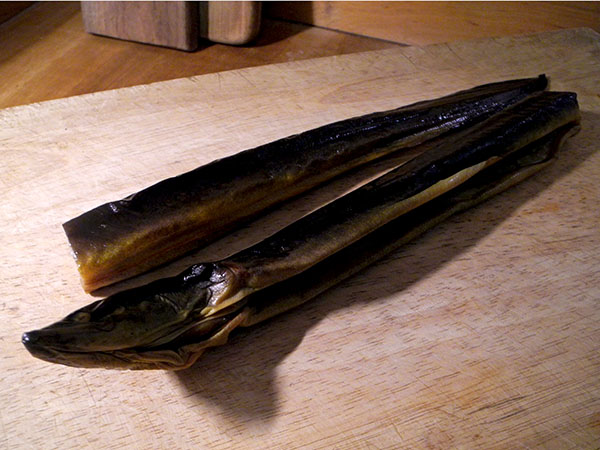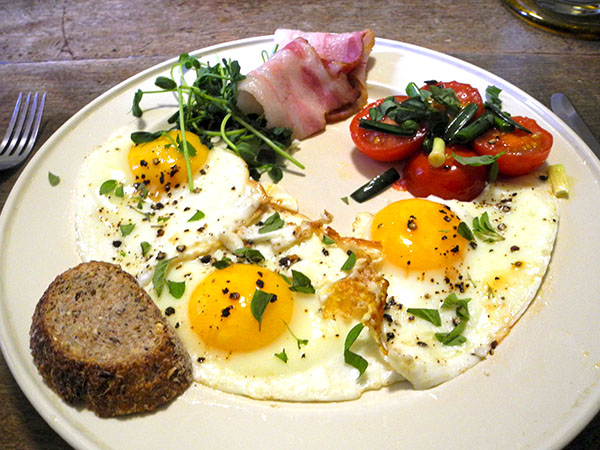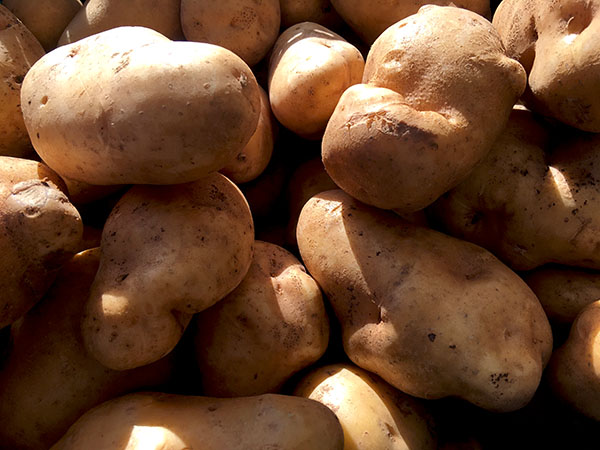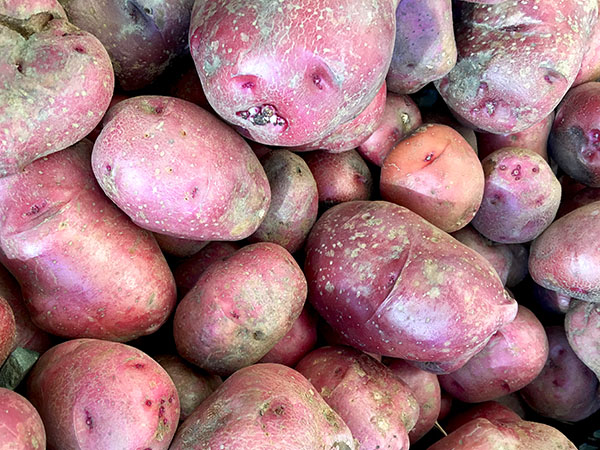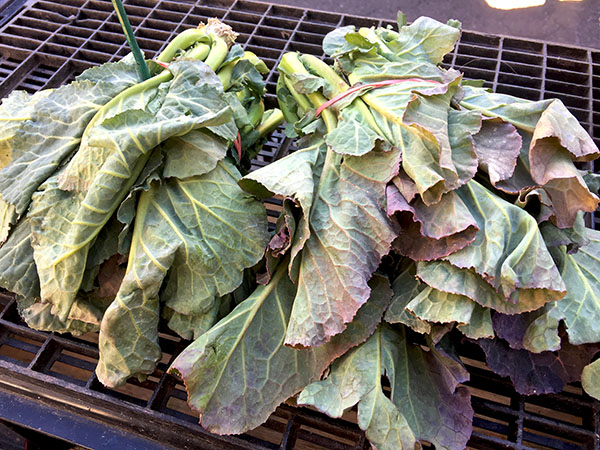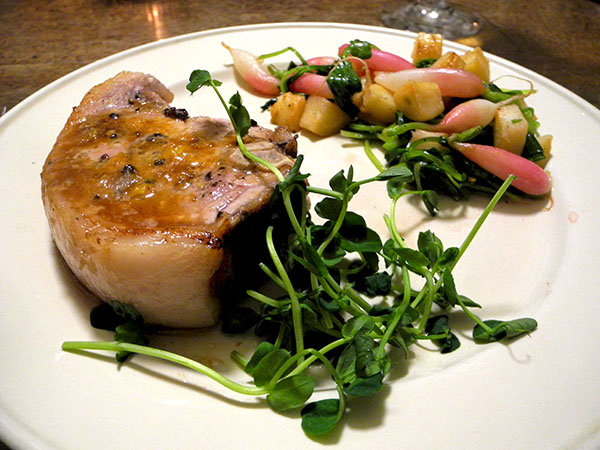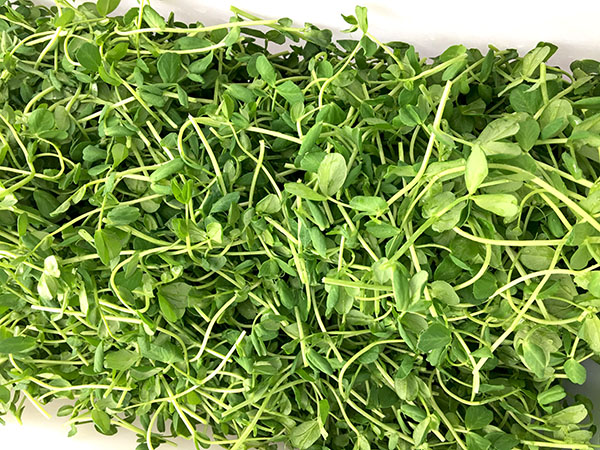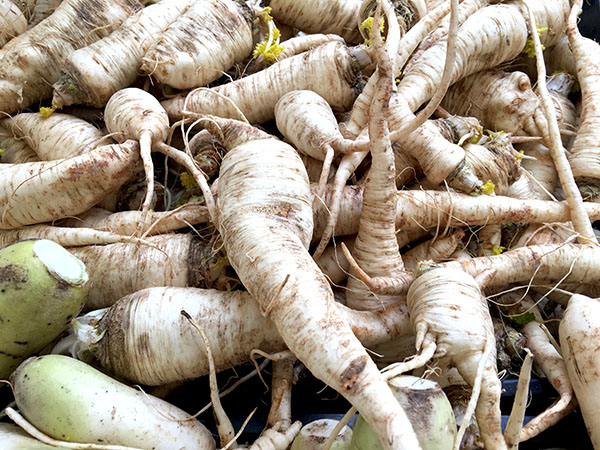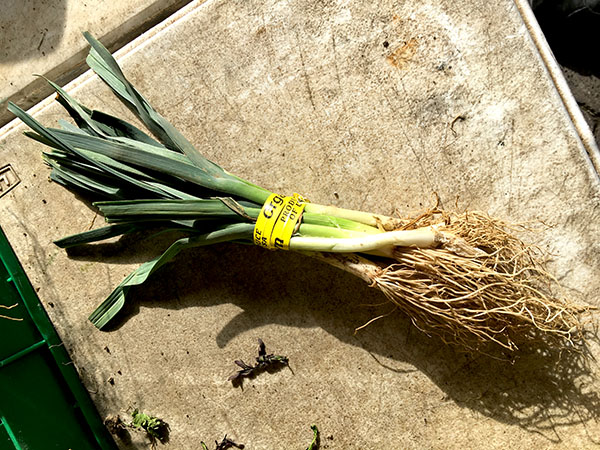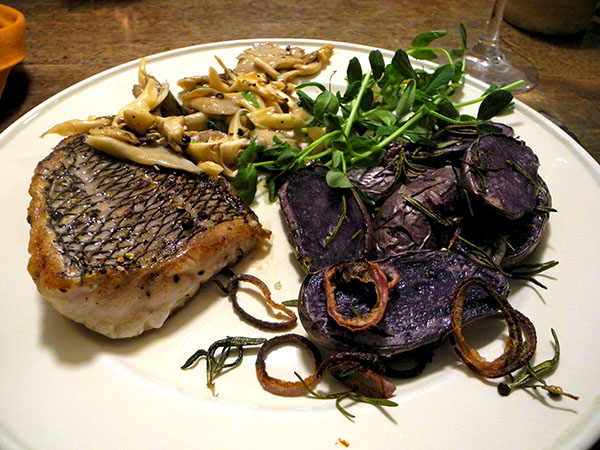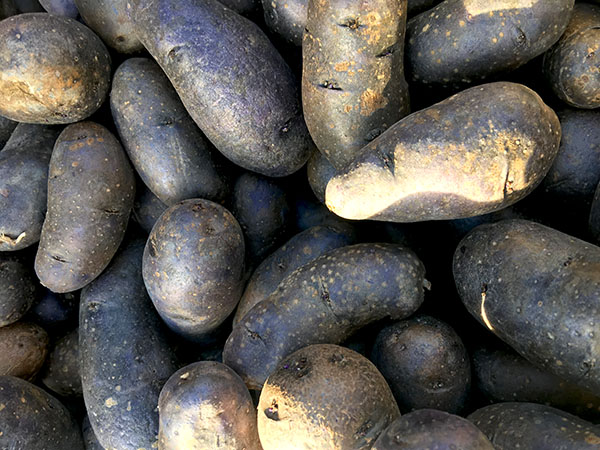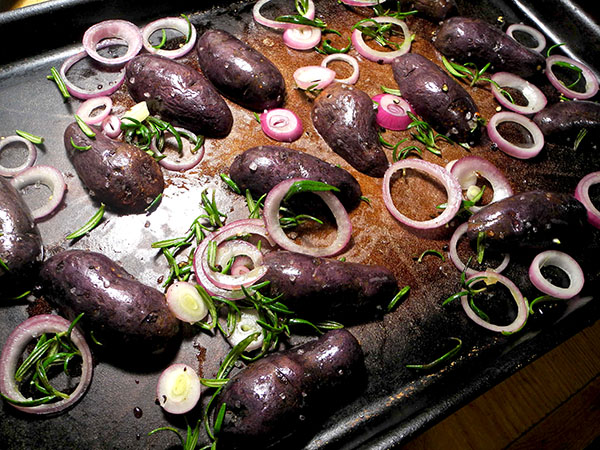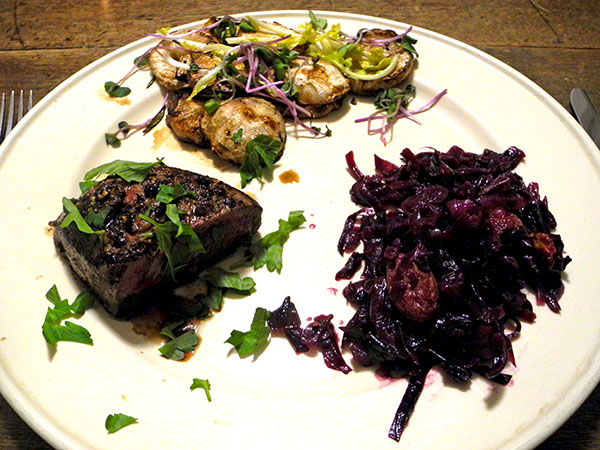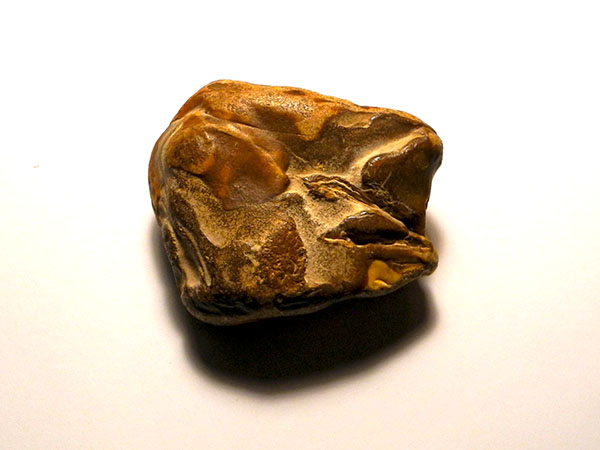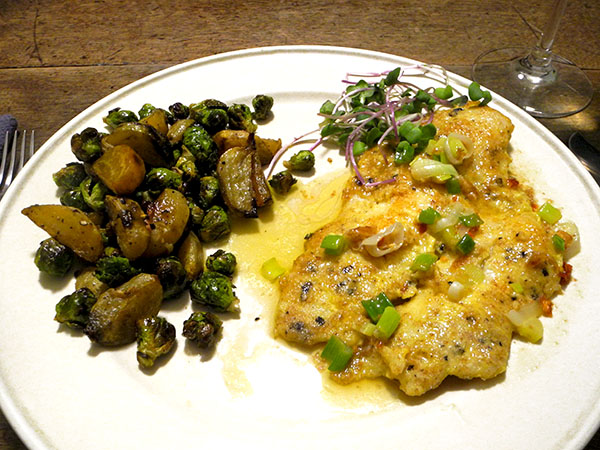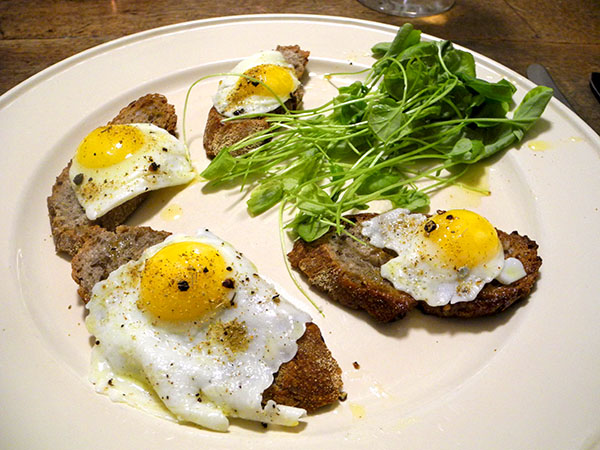
Yeah, pretty snazzy, yet still down to earth, I’d say.
I couldn’t resist these little ones. We love quail itself, but, while I’ve had many opportunities to bring home quail eggs, there was never the kind of imperative I felt looking at the beautiful clear plastic (yeah, well..) package of 15 while at the Union Square Greenmarket on Saturday: They were local and they were organic-fed. That, and the opportunity of preparing something I hadn’t before was more than good enough for me this time.
But I had no idea what I was going to do with them.
My assumption was that they would a part of a first course, the second being a simple good pasta. Last night I put those two concepts together: The appetizer became a dish of fried quail eggs on toast and the main course a beet pasta with a browned-butter sage sauce which I embroidered only slightly.
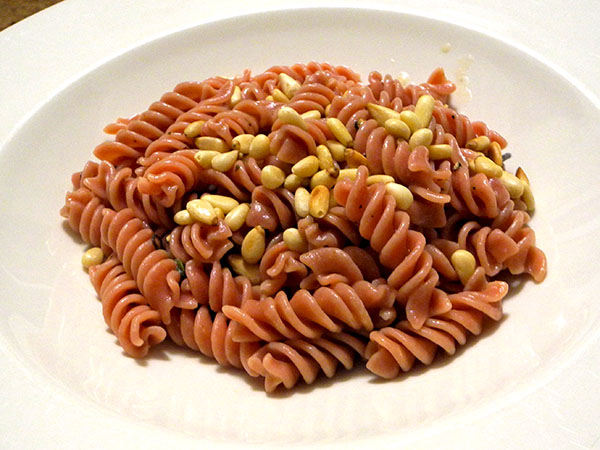
- eight quail eggs from Violet Hill Farm, fried in a heavy tin-lined copper skillet, seasoned with Maldon salt and freshly-ground Tellicherry pepper, sprinkled with organic Sicilian dried wild fennel flowers from Buon Italia, slid onto 8 slices, cut on the diagonal, of a really wonderful, sturdy ‘baguette sarasin’ (buckwheat flour bread) from Eric Kayser, which were toasted on top of the stove, then served with a little upland cress from Two Guys from Woodbridge, the little greens drizzled with a bit of very good Campania olive oil, from the Sannio region, and seasoned with salt and pepper
- eight ounces of Sfoglini beet fusilli with a brown butter sage sauce composed of 2 tablespoons of ‘Kerrygold Pure Irish Butter‘ melted in a heavy, high-sided tin-lined copper sauté pan and heated until golden brown, after which a number of sage leaves from Keith’s Farm were tossed in and stirred with the butter, the pan was removed from the heat and juice from almost half of a local lemon (Fantastic Gardens of Long Island) added, the sauce set aside until the pasta had been cooked and drained (some of the pasta water retained), when it was added to the brown butter, heated gently and stirred, a good part of a cup of the reserved pasta liquid added, 2 or 3 tablespoons of grated Parmigiano-Reggiano Vache Rosse from Eataly tossed in and mixed with the pasta, which was then divided into 2 shallow bowls and scattered with a small handful of toasted pine nuts from Whole Foods Market
- the wine was a California (Lodi) white, Karen Birmingham Sauvignon Blanc Lodi 2015
- the music was Jordi Savall’s album, ‘Music for the Spanish Kings’ (of the 15th century), with his ensemble, Hespèrion XX
